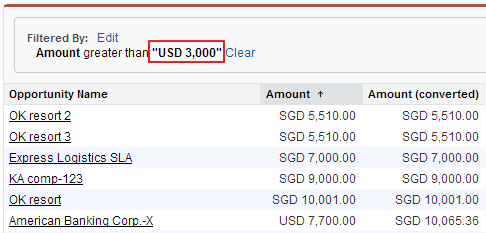1. What is a capability of historical trending? Choose 2 answers
a. Historical trending can track number, formula, and checkbox fields.
b. Historical trending reports show changed values in different colors.
c. Historical trending can be enabled for all standard and custom objects.
d. Historical trending reports can be filtered to show only records that have changed.
ANS: B, D
2. What is a capability of embedded analytics? Choose 2 answers
a. An embedded chart can be filtered to show data for the record on which it appears.
b. Report charts can be used to show data from tabular, summary, and joined reports.
c. An embedded chart can be used to share report data from a personal folder.
d. Report charts can be embedded on page layouts for standard and custom objects.
ANS: A, D
3. What is a capability of Salesforce Identity? Choose 2 answers
a. Require users to enter a time-based token in addition to login credentials when accessing Salesforce.
b. Require users to have a High Assurance session to access Reports, Dashboards, and Connected Apps.
c. Require users to use a time-based token when logging into Salesforce outside the trusted IP ranges.
d. Require users to have a High Assurance session to edit, modify, or delete selected objects.
ANS: A, D
4. How can an administrator or developer restrict users from seeing other users in the organization?
a. Set the organization-wide default for the User object to Private.
b. Create a sharing rule to prevent users from seeing other users.
c. Enable the "Restrict Access to Users" permission for all users.
d. Disable manual sharing for the User object
ANS: A
5. What is a capability of site.com? Choose 3 answers
a. View the site in different resolutions using live mode.
b. Use workflow rules to automate site publishing.
c. Export the style sheet from a site.
d. Create version of the site in multiple languages.
e. Import existing HTML pages into a site.
ANS: A, D, E
a. Historical trending can track number, formula, and checkbox fields.
b. Historical trending reports show changed values in different colors.
c. Historical trending can be enabled for all standard and custom objects.
d. Historical trending reports can be filtered to show only records that have changed.
ANS: B, D
2. What is a capability of embedded analytics? Choose 2 answers
a. An embedded chart can be filtered to show data for the record on which it appears.
b. Report charts can be used to show data from tabular, summary, and joined reports.
c. An embedded chart can be used to share report data from a personal folder.
d. Report charts can be embedded on page layouts for standard and custom objects.
ANS: A, D
3. What is a capability of Salesforce Identity? Choose 2 answers
a. Require users to enter a time-based token in addition to login credentials when accessing Salesforce.
b. Require users to have a High Assurance session to access Reports, Dashboards, and Connected Apps.
c. Require users to use a time-based token when logging into Salesforce outside the trusted IP ranges.
d. Require users to have a High Assurance session to edit, modify, or delete selected objects.
ANS: A, D
4. How can an administrator or developer restrict users from seeing other users in the organization?
a. Set the organization-wide default for the User object to Private.
b. Create a sharing rule to prevent users from seeing other users.
c. Enable the "Restrict Access to Users" permission for all users.
d. Disable manual sharing for the User object
ANS: A
5. What is a capability of site.com? Choose 3 answers
a. View the site in different resolutions using live mode.
b. Use workflow rules to automate site publishing.
c. Export the style sheet from a site.
d. Create version of the site in multiple languages.
e. Import existing HTML pages into a site.
ANS: A, D, E
